The Modern Freak Show
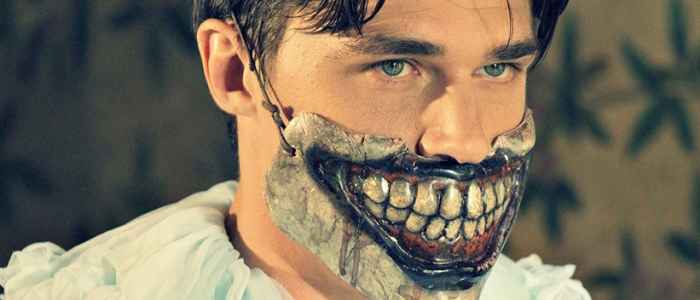
There is a long history in the exploration of variants of the human body. It has fascinated the fields of medicine, philosophy, art, and as evidenced by freak shows, even entertainment. The entertainment focus dates far back, including the Olympic games of Ancient Greece beginning c. 776 B.C.E 1. For the ancient Greeks, the ideal body was modeled after these incredible competitors, whose athletic feats were considered to immortalize them in history. The freak show turns that idea completely on its head.
Originally popularized in 16th century England, freak shows feature people whose unusual or “freakish” physical characteristics cause them to stand out. Freak shows as live entertainment for the masses have been dead for decades. On the other hand, intense fascination with the human body is alive and flourishing. Public curiosity about different physical traits and afflictions remains unsated, but the outlet that attempts to fulfill it has changed. It takes a new form in the viral videos and reality television programs that are broadcast today.
The History of the Freak Show
Those born with physical deformities have historically had difficulty living normal lives in society, and been met with a lot of curiosity and judgement. There are cave paintings from the Stone Age recording births of “monsters”, and prehistoric gravestones detailing ritual sacrifice of the supposed infant monsters 2. Clay tablets from the Assyrian city of Nineveh (which was also home to the Epic of Gilgamesh 3) list sixty-two congenital abnormalities and their corresponding prophetic significance. Whether they represented the wrath of God, or divine design, this caused freaks to be heavily scrutinized, profitable, coveted, and simultaneously dehumanized. They became commodities for royals, treasures touched by the divine 4. Dwarves were sought after by the Roman aristocracy, housed in the courts of the Egyptian Pharaohs, and played jester to the royals of Renaissance Europe. Among commoners, those who were malformed were rarely seen, and populated legends, stories, and songs.

During the Enlightenment of Elizabeth I’s reign freaks lost their religious and spiritual attachments, and consequently were no longer held by royals and aristocrats as status symbols or divine treasures. Freak shows became human museums where the public could sate their curiosities about those who had been hidden from them. The public wanted to study them, document them, and marvel at them. One of the most notable examples of those subjected to that early public scrutiny were brothers Lazarus and Joannes Baptista Colloredo, one of the best documented early cases of parasitic twins 5. Lazarus, amiable and handsome, earned a place for he and his brother as favorites in the court of Charles I of England. They were not, however, confined to the court exclusively. They marked the transition of freaks from upper class enjoyment to public spectacle. When wandering the streets, Lazarus would cover his brother Joannes dangling from his side with his dramatic cloak to avoid unwanted attention. Joannes, despite having a body comprised of one thigh, a full torso, hands, arms, and a whole head topped with hair, remained mainly unconscious. On occasion Lazarus would reveal Joannes in public, allowing passerby to pinch and prod him. Joannes was even said to have responded to this stimuli, especially contact with his arms, with non-verbal cues such as fluttering his eyelashes or changing his breathing patterns.
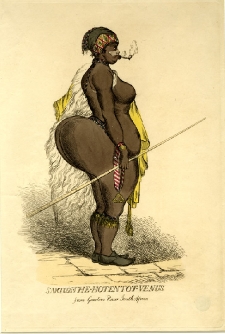
The Hottentot Venus was an early predecessor to the traveling circus and sideshow. Saartjie, or “Sarah” Baartman, and another woman from the Khoikhoi of southwestern Africa had their bodies on display as a freak show attraction. The women were showcased for their exotic origins and features, and displayed nearly naked. It was the large buttocks and genitals of the women that captured the most public interest. After her death in 1815, her body was preserved, and continued to be displayed as the Hottentot Venus, fully naked for public viewing until 1974. The story of the Hottentot Venus emphasizes that it was not only congenital disfigurements that caused someone to be labeled a freak. Any physical traits that fell outside of the norm, or the accepted ideals of physicality were pushed to the fringe extreme of being displayed as human oddities. Drawings and artistic depictions of the Hottentot Venus were given exaggerated features to highlight the great level of difference between the societal perspective on the African women on display, and the Caucasian women viewing them.
The Classic Circus Sideshow
It was in the Nineteenth Century that the freak show came to its iconic incarnation as a circus sideshow, and a widespread, commercially successful form of family friendly entertainment in Europe and North America. This commercial popularization was largely the responsibility of P.T. Barnum, the founder of Barnum & Bailey Circus. A masterful marketer and storyteller, Barnum orchestrated shows with a grand assortment of freaks and human marvels, both real and fabricated.
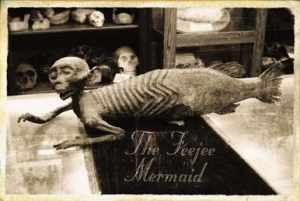
The “Feejee Mermaid” was one of Barnum’s most notorious counterfeits: the upper body of a juvenile monkey stitched to the tail end of a fish, and passed off as a mermaid. He concocted all sorts of elaborate and fantastical origin stories for his performers. A slave he purchased, blind and paralyzed almost completely from head to toe, he claimed had been George Washington’s nurse, aged over one hundred and sixty years old. Barnum’s cast ranged from Chang and Eng Bunker, whom the term “Siamese Twins” were coined after, to Fedor Jeftichew, the dog-faced boy. Barnum’s performers won him hundreds of thousands of customers and dollars. 6
His menagerie reigned supreme during the Nineteenth Century, but as the Twentieth Century came to dawn, and Barnum passed away in 1890, the popularity of the freak show dwindled. Advances in medicine and research provided explanations for congenital conditions and physical malformations. Imaginative and captivating backstories akin to tales of superhero origins were unmasked as lies, and replaced by medical diagnoses. Awe and wonder were replaced by pity for the struggles of the performers, and disgust at their exploitation. The entertainment value was sucked right out of freak shows. By the 1950s, as live shows competed with the rise of the film industry, and easily accessible media journalism exposed corrupt business practices, the freak show fell out of favor with the public into near extinction.
The Show Must Go On
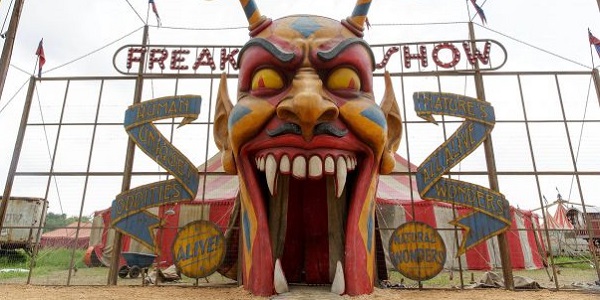
Freak shows may have fallen out of favor with the public, but we never fell out of love. Freaks shows and the Circus of the twentieth century still hold interesting stories and visual fascination. The colorful, celebratory, and odd aesthetic of traveling shows were meant to draw in customers – a tactic that hasn’t lost its success. Ryan Murphy and Brad Falchuk sculpted the third season of American Horror Story (AHS) around the freak show. American Horror Story: Freak Show carries off of nostalgia, and softens the history of the freak show by giving humanity and empathy to performers denied to them in reality, while maintaining the spectacle.
The show gives viewers the side of the story (albeit in a fictional world) the audience of the real freak shows would have missed out on. It provides the perspective from the inside-out, rather than looking in from the outside. The viewer sees the discrimination and judgement the performers faced in situations as simple as dining at a restaurant. While being initially welcomed into the world of the series, the appearance of the characters was used for shock value to drive up the “freak factor”, but as the series continued, the characters cast as freaks became richer than that first impression, filling the roles of friends, parents, lovers, and dreamers. The freak factor later on in the series was derived from the horrific actions of characters, committed largely by able-bodied characters. Whether it was a handsome serial killer, or a father mutilating his own daughter, the show concluded with characters being deemed horrific based off of their own actions rather than their appearances. The “freaks” become full-fledged characters, putting them on a leveled playing field with the rest. An article about the show in The New Yorker reads:
“Freak Show” embodies the philosophy put forth by Fraser in a promotional video for the series: while do-gooders view the sideshow as nefarious, it was, historically, the one place where people with odd anatomies were glamorized, not hidden away. There they could make money, live independently, and find sex and love. The difference between gawking and gazing, fearing and desiring, is not so simple. Murphy’s “freaks”—both the organic and the artificial ones—aren’t lessons for the able-bodied, and when the show does veer into pedantry (“You’re the real freaks!”) it’s at its weakest. They’re divas and lovers and revengers and martyrs, who get to experience the extremes of human emotion. There are enough of them so that they can’t be only one thing. At the show’s best moments, they’re stars, not props. 7
Rather than having the freaks be the spectacle, the heavy horror and mystery of the show, and even the aspect of performance were what makes the show a spectacle, rather than simply the bodies of the freak show performers. The spectacle happened around them, and while affected by it, they were not the sole cause of it. The show also touches on the horror of putting a person’s body on display for their differences, as happened to the Hottentot Venus, by having a subplot focused on characters who targeted the freak show performers in order to place their corpses in a museum and profit from it. In contrast to the emotional, human identities of the characters, the show’s creators revealed how truly horrifying this practice was.
Curiosity Reigns
The freak show disappeared largely in part because it came to be considered morally questionable, exploiting and dehumanizing the performers. With ethics on the line, attending freak shows became socially unacceptable. Attending freak shows became an action that warranted judgement, and people became wary of freak shows not solely because of their own consciences, but because of the social shadow it cast on them.
Moving into the twenty-first century, the “unusual” body as entertainment has gone from a spectacle to a private viewing. Media and entertainment are now largely consumed through television and the internet, which can be enjoyed from the comfort of one’s own home. This breathes life into the idea of a “guilty pleasure”, allowing people to enjoy questionable content in private, free from stigma or judgement.
Being a guilty pleasure is an idea that a lot of reality TV shows thrive on. Reality television has gone beyond the extent that American Horror Story has. Rather than reflecting on the history of the freak show, reality shows have brought the freak show back to live in a different medium, with the added layer of giving a story or an issue exposure to people who might relate to it. The network TLC (“The Learning Channel”) is a major producer of these shows.
With the degrading use of the “freak” label behind us, the curiosity about those in unique situations remains, and TLC has capitalized on that. Some of their reality shows continue the trend of exploiting difference for its shock value. For example, their show My Strange Addiction features people who are addicted to strange substances or habits, such as marrying dolls, drinking nail polish, pretending to be a pony, bathing in bleach, undergoing plastic surgery, or eating their dead husband’s ashes. Now that there are explanations for congenital conditions, much of the mystery and curiosity behind the specific issues affecting freak show performers is gone, and we are instead plagued by curiosity about people who exhibit freakish behaviors such as those depicted on My Strange Addiction. There are also shows such as Little People Big World, a show about a family with members diagnosed with dwarfism, a condition that in the past dictated those affected to participate in Freak Shows. Shows like Little People Big World show us that they have moved past the exploitation of freak shows to flourish in society, and television cameras allow viewers to see the details and logistics of it.
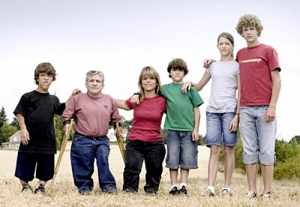
TLC also uses their reality shows to help the public understand things that are now considered, like the conditions of freak show performers were, socially unacceptable. One prominent example is the show Sister Wives, which features a polygamist family, and shows what the family themselves consider to be the positives and negatives of their lifestyle. For the Browns, their family dynamic creates a supportive community for all their children and each spouse, but leaves them at risk of legal consequences, and even forced them out of their home in Utah. Another example is the show I am Jazz, starring a young transgender girl and her family. The Transgender community, this year especially, have been a hot topic for discussion, and magnet for curiosity. The show allows the public to understand the issues and perspective of a transgender youth on a very personal level.
This vein of reality TV brings to the public things that they are curious, and largely uneducated about. However, unlike freak shows, the subjects of the curiosity themselves have power in deciding how they are portrayed. TLC shows and other reality programs allow viewers to explore and observe topics and ideas that might be new to them or misunderstood. What TLC does with their shows goes beyond fulfilling curiosity, and tries to provide explanation and answer questions.
Going Viral
If you take away the empathy and go straight for the entertainment value, the modern spectacle that most closely mirrors the spectacle of the Freak Show is viral content online. Whether it’s a twitter blowout between celebrities, or a viral video of a bleating goat standing in for sections of song lyrics, the internet is a breeding ground for publicizing all sorts of attention-grabbing behavior. Like freak show banners that advertised the mesmerizing talents and attributes of performers for paying customers, viral videos and social media frenzies battle for the highest number of clicks, likes, and followers.

Content that receives mass attention ranges from innocent videos of an infant biting his brother’s finger to teen girls getting into fist fights with each other. Picking up where P.T. Barnum left off, social media users continue to push the envelope further and further, testing theirs limits to see what will capture attention. The magic of the online freak show is that it’s guilt free; Rather than being close enough to a performer to see the sweat beading on their forehead, there is the distance of a screen and likely hundreds of miles.
The freak show is part of a long and continuing history of otherizing identities and pieces of the human experience that are hard to understand for those not experiencing it themselves. Slapping of “freak” label on someone, or using a screen to distance oneself from them are ways allow humans to exploit each other’s lives for our own entertainment and education. Some of these forms of distance are more humane, or more cruel than others. With technology and social media making the entire world accessible by a click, there are endless answers to be found, and questions to be created. How outlets for human curiosity will evolve remains to be seen, but the world will be watching.
Works Cited
- The Athlete. (n.d.). Retrieved from http://www.olympic.org/content/olympic-games/ancient-olympic-games/the-athlete/ ↩
- Thomson, R. (1996). Freakery: Cultural Spectacles of the Extraordinary Body. New York, New York: New York University Press. ↩
- Nineveh. (2015). In New World Encyclopedia. MediaWiki. ↩
- Pednaud, J. (2012, March 13). The Origins of the Freak Show. In The Human Marvels. ↩
- Mundie, J. (2010). Portrait of Lazarus and Joannes Baptista Colloredo. Prodigies: Analogous Humans. Web. ↩
- Crockett, Z. (2014, April 30). The Rise and Fall of Circus Freakshows. Priceonomics. Web. ↩
- Nussbaum, E. (2014, December 8). The New Abnormal. The New Yorker. ↩
What do you think? Leave a comment.
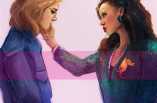
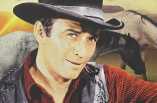
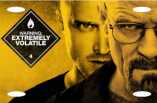
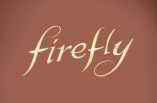
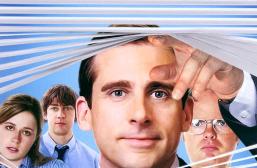
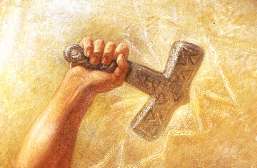
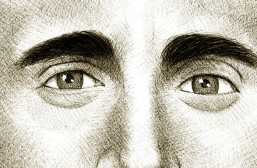
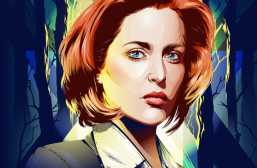
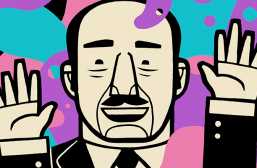
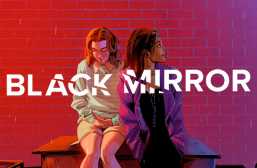
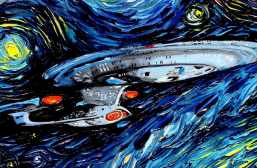
Such a good article! One of the best I’ve read on here. I enjoyed the comprehensive history of the freak show and the exploration of how we view those deemed as Others.
Thank you so much! I’m a fan of your articles, so I’m glad you took the time to read.
I can recommend the X Files episode Humbug from 1995 which I only saw for the first time a couple of weeks ago.
It is definitely one of the better ones and stars the Twin Peaks dwarf.
If it’s the one I think it is it also featured members of the Jim Rose Circus Sideshow I think Enigma the tatooed chap and the Torture king featured but my memory is a little hazy and more may have.
Michael J. Anderson. He also played the proprietor of the freakshow in Carnivale, which ran for two seasons in the early 00s.
practically every TV programme is a freak show.
Interesting thought. Not sure if I agree, but it can definitely be argued.
Have loved all the series of American Horror Story (Murder House, Coven, Asylum in order) but just can’t get behind Freak Show. There’s something missing that I can’t put my finger on. It don’t think it has the craziness of the other series despite having the most scope for it and the dark, sharp humour seems to be missing too. There were plenty of times when the other three series gave me ‘what the fuck!’ moments but left me grinning but so far this has not happened once.
This is the first series that makes me groan every time Jessica Lange appears on the screen.
I use the word ‘freak’ in a variety of ways…
A sudden, rare and unexpected occurrence, e.g., “A freak storm.”
A person with an excessive fixation on a subject, e.g., “A Jesus freak.”
A synonym for “Hippy” or “Head”, as in “The Fabulous Furry Freak Brothers”.
A (usually drug-induced) panic, as in “Freaking Out.”
A general rule when engaging with people, as in “Don’t freak out the populace.”
I have never, ever used it to describe a person with a disability. Unless they were Jesus Freaks or Hippy Freaks.
You personally may not have, but that doesn’t mean it hasn’t been done. If you read closely, the label “freak” fits what is misunderstood by society. We wouldn’t use the term “freak” to describe someone with a disability, because disabilities are no longer considered freakish. What is freakish, is the behavior we see in viral videos, choices such as polygamy, or as you say, “Jesus Freaks” or “Hippie Freaks”.
I really, really think that this overly PC attitude everyone had these days is ridiculous. It’s entertainment. Let people be entertained without making it seem like they have to feel guilty about it.
“British Horror Story: Freak Show” = “Doctor Who”.
I’d say that’s far more Sci-Fi than horror.
GREAT history sweep of the freak show!
American Horror Story is a complete dogs dinner. Cheesy, nonsensical with plot holes you could drive a hearse through and with Jessica Lange & Kathy Bates chewing the scenery disgracefully.
And I bloody love it!
For those who have ANY interest in this world (beyond being compelled to write your “pithy” societal commentary here) you HAVE to read mannix’s “memoirs of a sword swallower.” it will completely change your view of the concept of “freaks.”
If this article scratches the surface, that book digs the trench.
Great article.
I find it sad that something which has been such a strong part of American Folklore is dying out so fast. First of all, I think so many US horror writers(Stephen King, R L Stine) are so indebted to the carnival that it’s hard to think future generations won’t even know what it is. It says something about the US that in many ways it has failed to retain many European traditions and culture brought along to its shores at the turn of the century. The same can be seen in acting, there will only be one generation of De Niro and Al Pacino before the old culture gets watered down into oblivion. The US has managed to build tradition in many of its public institutions and corporations but has failed to do so in its society.
Thank you for the comprehensive history; great article.
Thank you so much for reading!
I was genuinely surprised: I’ve never thought of the connection to reality television, but it makes so much sense. So much of TV is centered around the idea of gawking at others with different situations than our own. Great article and obviously extremely well-researched, I was glued to the page!
Thank you so much! I’m glad you enjoyed it!
Genetic mutation can enhance a species success for survival. Scientifically these mutations can educate and help to enhance the species. Nonetheless, there are specimens of our species that manipulate these mutations for profit and a sense of superiority; therefore, the Freak Show mirrors the audience.
Wonderful thought. Thank you so much for reading!
Love to learn more about freak shows!
American Horror Story is a great show.
I’m new the AHS franchise, with Freak Show being my first outing. I must say i am not really enjoying it. There is so much scope for the characters but nothing really seems to be happening. I only watch it due to routine, and the hope something good will happen.
When Walmart arrives in town the freaks will return. It’s quite the scene on a weekend evening.
As someone who has a congenital deformity myself, I’m extremely curious about the Assyrian clay tablets. I read the Nineveh article on the New World Encyclopedia, but couldn’t find any reference regarding the prophetic significance of disabilities. Would you be so kind as to help point me in a more specific direction? I would really appreciate it! 🙂
Hey, thanks so much for reading! I would check out Source 2, “Freakery: Cultural Spectacles of the Extraordinary Body” by Rosemarie Thomson.
https://books.google.com/books?id=djPCfSAsHN0C&printsec=frontcover&dq=Freakery:+Cultural+Spectacles+of+the+Extraordinary+Body.&hl=en&sa=X&ved=0ahUKEwiTvsLu2trKAhXDKx4KHZ1ECMwQ6AEIHTAA#v=onepage&q=nineveh&f=false
I’m so curious to see American Horror Story now! I have held off because of feeling uncomfortable about the portrayal of people as part of a Freak Show. What a fascinating history of the term and the idea. I especially love how you connect “freak show” to the modern day.
Thanks so much! I’m glad you enjoyed it! I think a big part in not feeling that guilt from watching the show is watching interviews with the cast first.
As much as I really wanted to watch a TV series with Jessica Lange in it, I barely made it through the first episode of American Horror Story. It was so loud and cut so fast that there was just no fright or atmosphere about it: it was the horrorshow equivalent of WRITING IN ALL CAPS ALL THE TIME. BOOO!!
No place for animals in a Circus – in a civilized society it wouldn’t happen!
There’s no such thing as a civilized society. The Romans thought they were civilized…
Excellent article. For further reading about carnies, try Eyeing the Flash: The Making of a Carnival Con Artist, by Peter Fenton.
This is a wonderful article about something I’ve been thinking a lot about recently. It’s a pretty important topic. I’m currently making my way through AHS: Freak Show, and even before that I’ve been interested in how fictional carnivals depict Othered people such as the disabled, or, in the case of real life Sarah Baartman, an intelligent woman who suffered many losses, race and gender in a colonial (and eventually post-colonial) society. The spectators view these people with dual revulsion and curiosity and even go so far to fetishize the carnival workers, thus believing them to be less than human.
Great work on this!
I’m so glad you enjoyed reading. Even researching the lives of people such as Saritjie Baartman is equally fascinating and horrifying.
AHS is something I always start watching but never make it to the end of the season. Too much is thrown into the mix. I think an 8 part season would keep it more restrained/tight..
My main problem with the AHS, is that it hasn’t been anywhere near anything resembling something with scares in it since the first season. All they do now is throw a load of weird things into the show, trying to shock you instead of scare you.
It should be called American Weird Story instead of American Horror Story.
This was awesome, thank you!
Such a compelling take on a season that, in my opinion, was rather lackluster. Thanks for this! If I were to go back and rewatch this season of the show after having read this article, I would likely enjoy it more, knowing more of the historical background of freak shows and how they’re hidden in plain sight today.
Wow, thanks so much! I’m glad you enjoyed it!
Excellent article! One of the things that came to mind when reading this article was the notion that “manufactured freak-shows” are almost impossible in the environment of modern freak-shows. In one of his documentaries, Sam Dunn discusses how the advent of the internet and other more acceptable presentations of the freak-show has made the manufactured repulsion of shock-rock metal musicians almost impossible. The documentary also poses an interesting question in its conclusion of what, if anything, can be done to shock people with so much access to disturbing content (which may make for a good future article).
One thing I’ll say is that the freak show (sadly) isn’t dead. I’ve seen large booths at my local fair and circuses that still have people on display. While not as bad as it undoubtedly was in the past, this isn’t dead. Wish it were though.
David Lynch’s film, “The Elephant Man,” shows how poorly people treated Joseph Merrick.
You know, I’m still trying to get into American horror story, but I have to say reading about this has given me a lot to think about haha
This article was better than the season, it was kind of “eh” for me, but I am going to give it another try based on this piece haha
Everything sadly has become a freak show, a circus less Roman and more German, less Pinocchio more vicious muppets and twilight zone puppets. Who knew that Berkowitz was going to become our Virgil…?
I really enjoyed this comprehensive article on the history of the “freak show.” It is fascinating to see how these things became what they are and how that is impacted modern culture.
Very good article. Never put together the similarities of TLC and freak shows. But it makes sense. Another example of this could be the fascination of “My 600 lbs Life” or “Hoarders.” Sometimes people watch such shows to feel better about their own lives.
Leaving aside the fact that humans are naturally curious, and often morbidly so, I think that an interesting aspect that was brought up in this article is the idea of “otherness”. Since humans are tribal by nature, we split ourselves into perceived groups of us and them. The reasons for this are obvious when we look at the evolution of humankind. It was a necessity for survival. “Our group” needs this land, these resources, in order to live. “The other” group is encroaching on “our” resources and thus, is hindering our ability to survive. Thus, they are bad and must be kept out. However, the otherness of the “freak” is not about “us” vs. “them”, in that, “they” are going to steal our resources. This specific type of otherness is about a need for understanding of self.
Ask any true crime fan why they are fascinated by serial killers and you will often get the answer, “I just need to understand.” Some of us feel an intense need to understand why the world is the way it is, especially the things that are the most horrific, or as with the “freak” most incompatible with what we are used to seeing in our day to day world. If you consider the traditional “freaks” — the Bearded Lady, Lobster Boy, Siamese Twins, etc., when you see images of these people, or if you were among those who saw them in person, the first reaction is generally shock. Then the questions begin swarming through your mind — What am I looking at? Why are they like that? What happened? How do they live? Our mind is searching for answers that the typical person will probably never get (unless you have the internet and curiosity, then viola!). For persons such as myself, who has a deep fascination for all things unusual and generally morbid, I have examined what my overwhelming curiosity for understanding of this specific type of other is.
Look at my above string of questions. For those of us who have often found themselves identifying as a freak, whether because you look different, act different, are interested in odd things, these are the questions we ask ourselves. Perhaps the fascination with this type of other is partially caused by the commonality we feel with the “freak”. If we can understand the who, what, why, and how of the odd-seeming person that we are being confronted with, perhaps we can understand the freak that we perceive ourselves to be. Thankfully, the people who are physically or socially different than us and are on display now have control of their own destinies. TLC’s vast array of shows about people who live differently than the average viewer has allowed the viewer to access some of the answers that we crave without hurting someone else with the gaze. These people aren’t as “other” as they were before, and we don’t feel as “other” when we understand that their experiences of day to day are similar to ours. We can say that TLC and the internet has normalized the “freak”. However, I prefer to think that we all are freaks and this is the actual meaning of normal.
Great article! I absolutely love American Horror Story, and I loved the thoughtful article about season 3. The connections to reality TV are definitely clear. This is the first time I’ve heard about Lazarus and his brother, and I’m totally fascinated by them. I’m glad that the use of the word “freak” has been mostly pushed out of our lexicon.